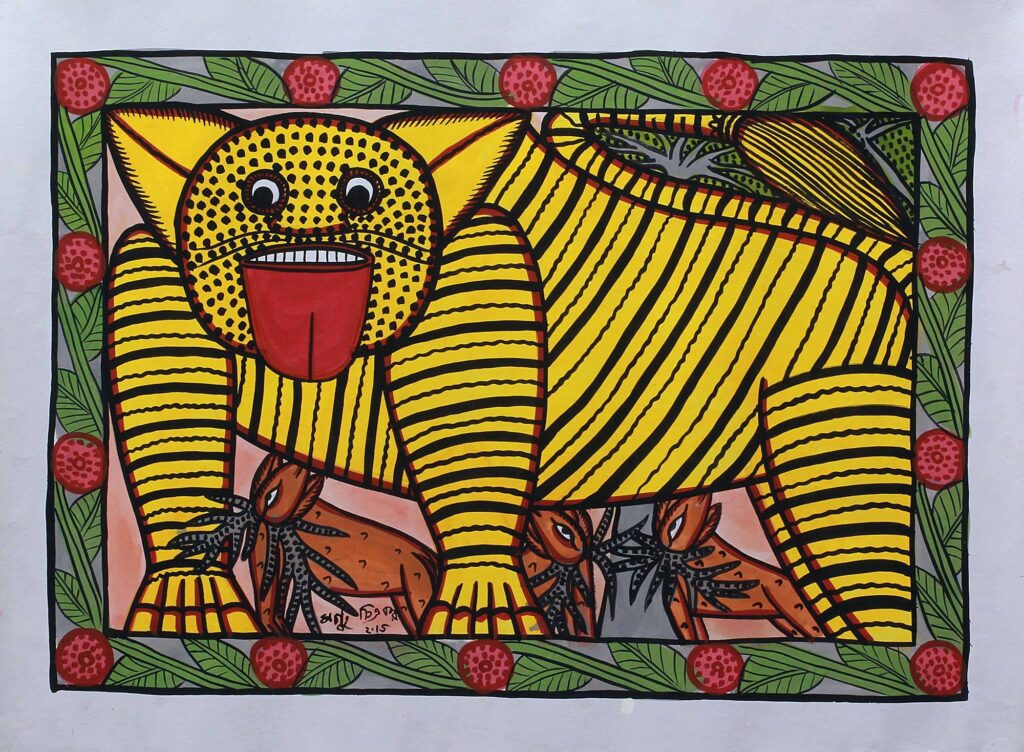
A pregnant tigress once jumped into the midst of flock of sheep. As she did so, she went into labor, gave birth to a tiger cub, and died on the spot. The kind-hearted sheep nursed the cub and brought him among them. When they ate grass, the cub followed their example; when they bleated, he also learnt to bleat though his bleat sounded strange. The cub grew up looking like a tiger but had the character of a sheep.
One day a magnificent full-grown tiger watched with amazement this grass eating tiger cub. As the big tiger came near, the flock of sheep scattered. The cub was left behind and he bleated, terror stricken. Then the big tiger came close to him, talked to him, made friends with him, and dragged him to the lake and said, “Look at yourself in the water. That is you. And look at me. You are exactly like me. You are not a sheep but a tiger. Your food is not grass but meat.”
The grass-eating tiger cub couldn’t believe it. The big tiger slowly convinced him that he was no different than him. At first, he wouldn’t touch meat, and ate grass and bleated, till one day the big tiger forced him to eat a piece of flesh. He liked the taste of blood. He stopped bleating and eating grass, and soon realised he was no sheep but a tiger. Eventually, he went with the big tiger and lived like him.
Source: Folktales from India by A.K. Ramanujan
Artwork: The Royal Bengal Tiger by Montu Chitrakar (Type: Patachitra Painting)
The word Pata is derived from the Sanskrit and Pali word meaning “cloth,” and Chitra means “picture.” Patachitra means “picture painted on cloth,” and it refers to a storytelling tradition originating in the Medinipur region of West Bengal. The painter community is called Patua, and all of the artists bear the same last name Chitrakar, meaning “painter.” Through this unique art form, the bard presents the story with pictures while simultaneously narrating a song called “Pater Gaan.” Patuas use colors extracted from various trees, leaves, fruits, flowers, seeds, and clay. Traditionally, their themes revolved around mythological stories, but the newer generations of Patuas paint about contemporary social issues ranging from violence against women to climate change. They are deftly capturing the changing times.

